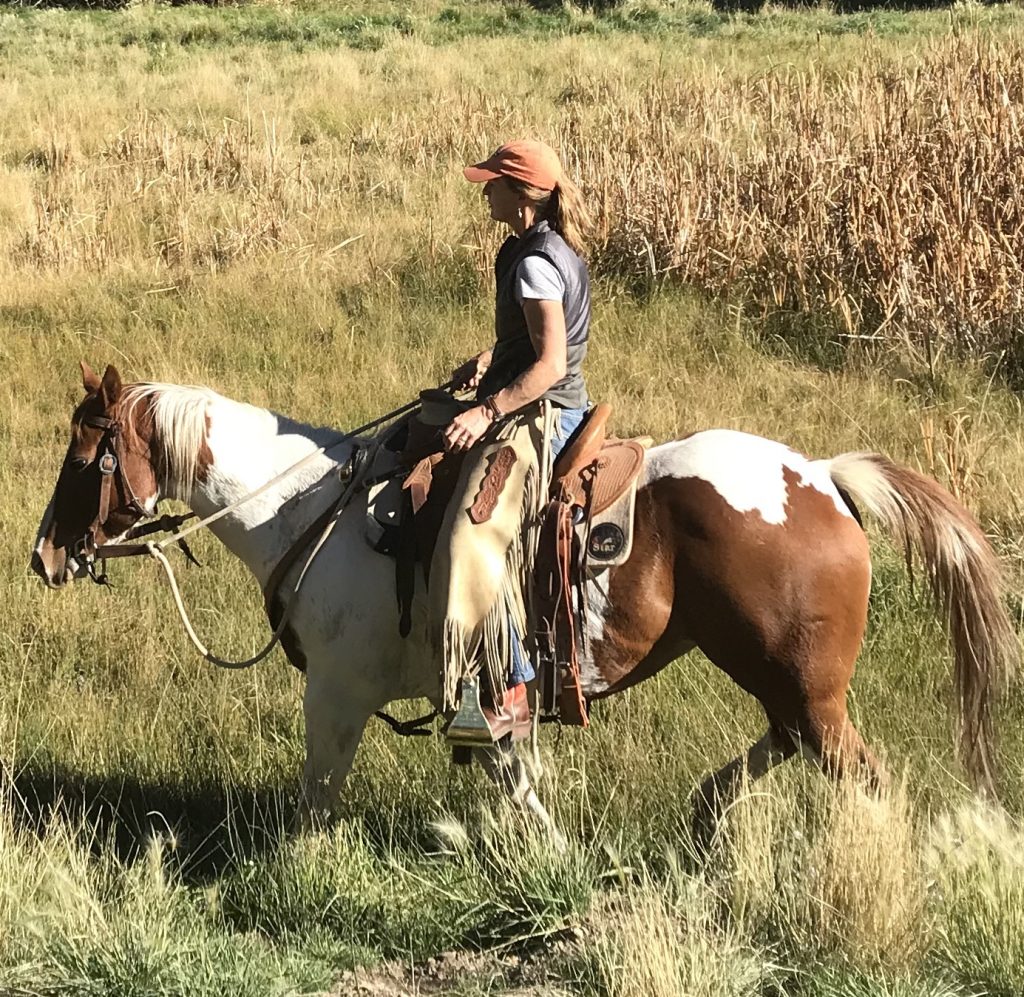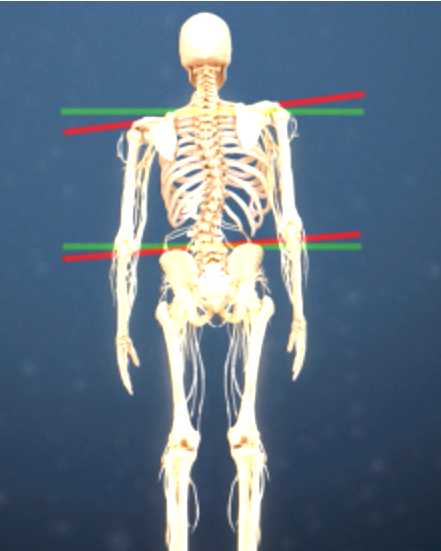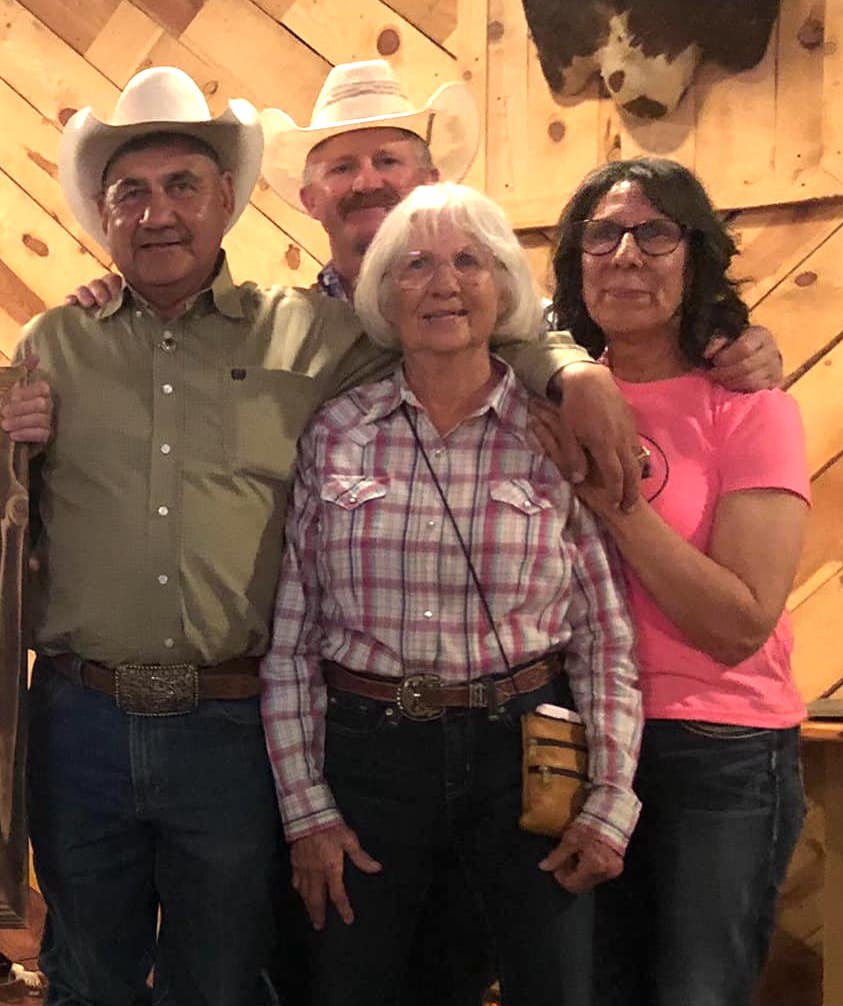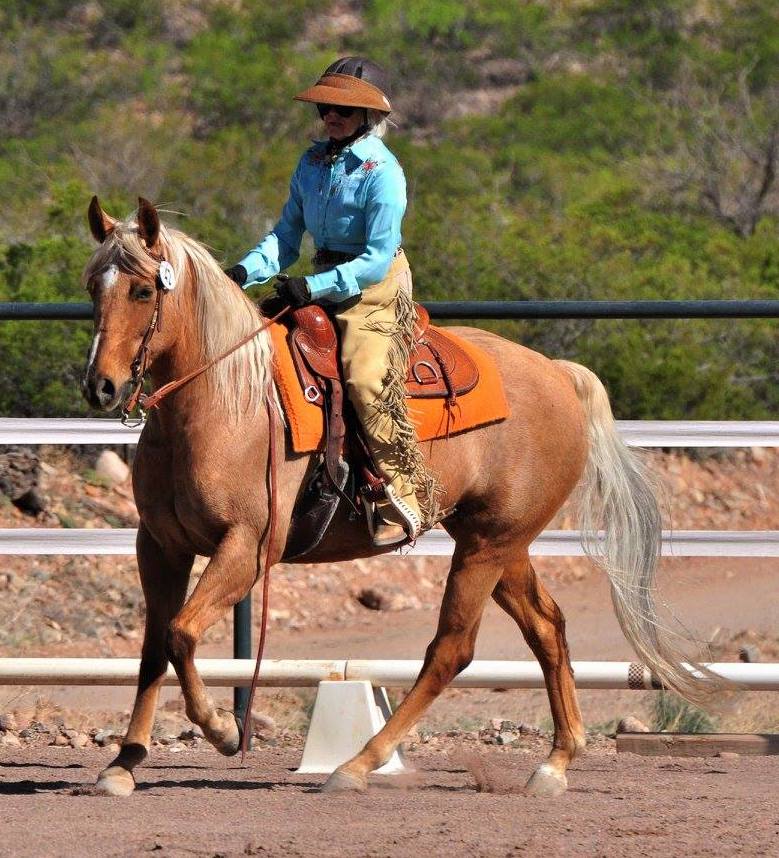
Writer and rider Maddy Butcher considers her scoliosis diagnosis
Editor’s Note: With the publication of Diagnosis Offers Eureka Moment, we heard from two accomplished riders with spine conditions.
Julie Wilson has spinal stenosis, a narrowing of spaces within the spinal canal, which puts pressure on the nerves traveling through the spine. She was diagnosed in her 60’s.
Another experienced rider prefers to remain anonymous.
Here are reflections from their experiences with these back concerns, particularly as they affect riding.
Writes “Lynn”:
My back curves right in the top half, then bows left in the lower half. So, from the front I look pretty balanced and it does not look as extreme as it actually is.
My right shoulder and left hip are a bit higher than their counterparts. I can’t move my right shoulder back as far as the left one when I try to straighten up and put my shoulders back.

Scoliosis means hips and shoulders may not be level
However, my back has never hurt me, except when vacuuming or changing sheets on the bed. Those chores cause my lower left back to painfully spasm. My yoga teacher, who also has scoliosis, suggested I stop doing those activities. Advice I was happy to follow!
Regarding my riding, I am sure scoliosis has affected my balance. It is much easier for me to circle left and pick up the left lead, for example, than it is to go right. But I’m not sure it’s impacted my horses much. I have owned, ridden, and bred lots of horses and they usually have not been bothered too much by it. The exception is my latest horse. She is incredibly sensitive to everything, and we’ve spent years trying to figure each other out. I will try and be even more aware of this now when I ride.
We showed in our first show together yesterday, and it went very well. The judge did remark on both tests that we drifted right down the centerline. I thought we were pretty straight, but I am really going to have to reassess my balance now.
This mare responds to my slightest cue, so I believe that she would be trying to compensate for my imbalance. She is determined to improve my riding!

Sensitive horses may be considerably more affected by rider asymmetry and stiffness
As noted in your article, scoliosis has a maternal genetic basis. Given the incidence of scoliosis in women, I think this would be of interest to a lot of riders.
Editor’s Note:
This message from Katrin Silva: Julie Wilson has been a rodeo queen coach, barrel racer, roper, fearless colt starter, and dressage rider. She is now 76 and as energetic and full of plans as ever. But she says riding has become too painful. It’s also been painful for me to watch her struggle with making this decision to no longer ride. I keep wondering if addressing her spinal issues sooner and more aggressively (as Maddy is doing with physical therapy and exercise) might have prolonged her riding career. Like a lot of us, Julie is one tough cowgirl. And like a lot of us, she tends to ignore pain and soldier on. Perhaps addressing it earlier might have made a difference.
Julie Wilson writes:

At center, Julie Wilson
As I’ve aged, my ability to use all my leg aides have diminished. I suspect that basic left-to-right balance for any aging rider will change as one’s spine either suffers micro fractures or stenotic narrowing.
My riding changed as my spinal stenosis progressed with age. I started noticing stiffness and pain in my late 60’s. I got x-rays and then an MRI for the diagnosis. I did have some physical therapy, but it nonetheless progressed.
The effect on my riding was a stiffness in the pelvis that made using my back to influence my horse more and more difficult. I suspect that at least one of my horses developed a sciatic-like stiffness as a result of my stiffness. Chiropractic and body work indicated this was indeed a problem area for her.
As I moved into my 70’s, trying to progress to Level 2 seemed unattainable for me and my horse. She did perform better when lithe, supple Katrin rode her, I noticed.
I think these experiences speak to the magic connection riders’ bodies have to their horses’ bodies. The higher level of riding expertise we seek with our horses, the more critical it is for riders to understand the mechanical condition of their own bodies. Too often, we seek to find imperfection in the horses’ bodies first. Then, we willingly to pay for acupuncture, chiropractic sessions, massage, magnetic and electrical stimulation for our horses when our body imbalances may be the root of their problems. We humans can be very unbalanced. For example, a bad knee or hip for us likely means riding more strongly left to right or vice versa.

Julie Wilson
I’m not a large person, yet my stiff lower back changed the way my horses could or would use their backs. As my whole body has stiffened, tightened, and became weaker with age, I had to change my whole riding program.
Competitive riding – where loss of cue accuracy, inability to sustain
leg cues, and a growing lack of total body balance reflected in poor scores – had to go away. For the last two years, I have tried to maintain trail riding fitness. Lately, though, I haven’t ridden at all.
I believe everyone should ride as long as they can do so – safely for themselves, and comfortably for their horse. My journey has been a lesson learned: we need to take better care of our bodies if we want to use them for best possible horse-rider communication.
I too have congenital double curve scoliosis which is a symptomatic. My shoulders and pelvis are neither level nor straight. I’m only a pleasure rider but also a student of equine biomechanics and training. I don’t believe that my horse is unreasonably impacted by my lack of symmetry, he’s learned to carry me and respond to cues as I am.
I’m very happy to see these discussions come up more and more. Speaking my language. I’ve been a life long chaser of the balance between mobility and stability, to the point that I spent over 30 years as a professional bodyworker and movement rehabilitation specialist. Something to keep in mind is that we are NOT symmetrical beings. Heart on one side, liver on the other, one lung bigger than the other. There are many people with scoliosis that are pain free and others with seemingly straight spines that suffer severely from neuro-muscular compensation. I also know some extremely high level riders with severe scoliosis. So what’s the story with that? For one thing, mindful movement, working on strength, mobility and balance can mitigate the effects of even seemingly severe issues. Basically it’s all about how we compensate to manage gravity. Think about what that means when we perch on the back of a horse, who is also trying to manage gravity! As an aging equestrian, I struggle with this too. Saddle fit has become much more important to me besides having one that fits my horse well. I need to be extremely centered in a well balanced saddle. No more, “Oh, what ever.” I was grateful that Katrin shared her experience recently. I only WISH I could find a bodyworker here in 4C who was as skilled. In the meantime, I use the myriad of skills I learned in my decades in the biz and hope age catches up with me later than sooner. You haven’t lived until you’ve had really high quality therapeutic bodywork.
Great comments, Kerry. Thanks very much for contributing to the conversation.
I’m a senior with scoliosis. While I had a high spinal fusion as a teenager, it wasn’t until I started riding again after many years off that I realized how much my body had continued to twist and compensate above and below the fusion. I’ve always worked on straightness training for my right banana OTTB, but just realized recently that she, too, has a scoliosis, just opposite direction from mine. I think her curvature has become more pronounced over time as well, despite suppling and straightness exercises from the beginning 7 years ago when I got her. I’m comfortable with who we are and our partnership with offsetting asymmetries and doing the best we can riding into old age. We can’t cure, but we can keep moving.
Has anyone ridden after spinal surgery. Laminectomy and/ or fusion. I am a fit 77 year old.